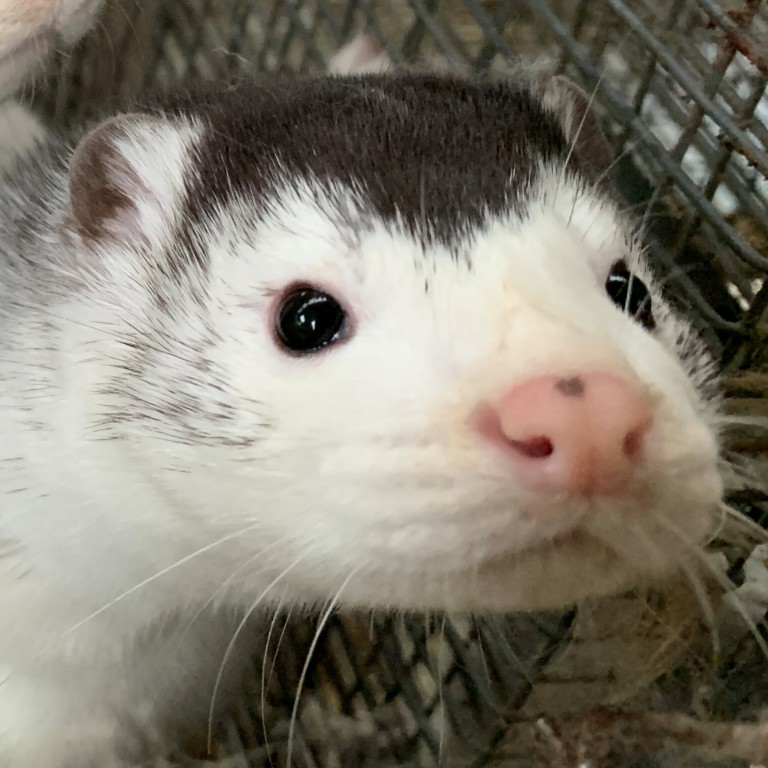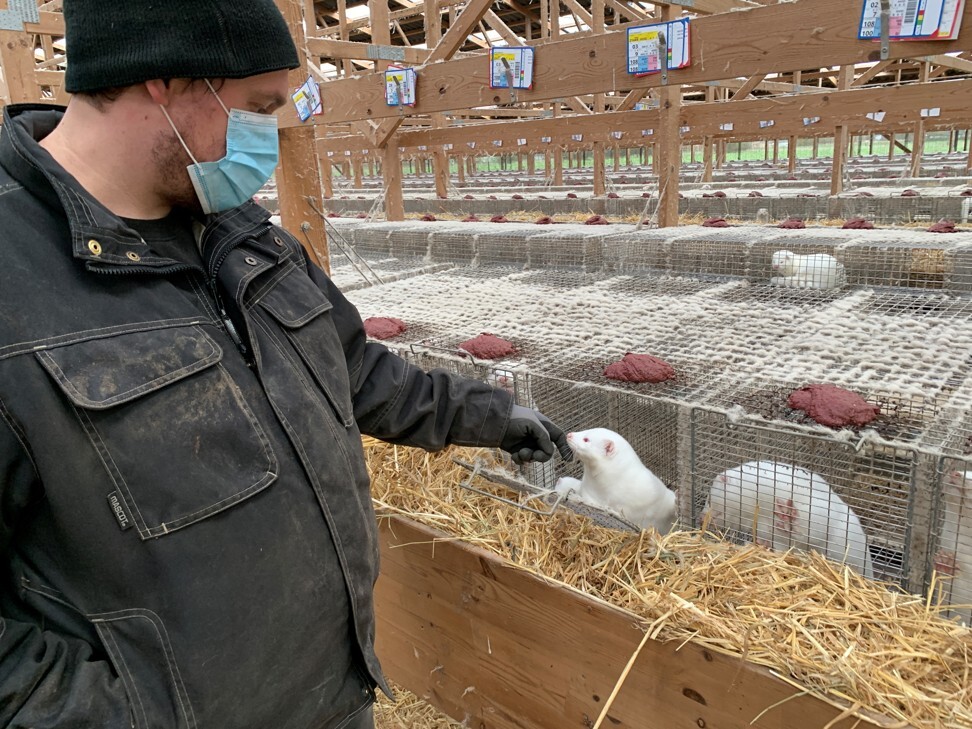
North Denmark in lockdown as millions of minks with mutated coronavirus ordered to be culled
- Copenhagen warns that new version of virus could threaten effectiveness of future vaccines
- The cull of 15 million minks may spell the end of Denmark’s status as the world’s largest mink fur producer, with most exports going to China and Hong Kong
Prime Minister Mette Frederiksen said the move was meant to contain Covid-19, and it came two days after the government ordered the cull the 15 million minks bred at Denmark’s 1,139 mink farms.
The coronavirus evolves constantly and, to date, there is no evidence that any of the mutations pose an increased danger to people. But Danish authorities were not taking any chances.
In seven northern Denmark, municipalities with some 280,000 residents sport and cultural activities have been suspended, public transport has been stopped and regional borders have been closed.
Only people with so-called “critical functions” such as police and health officials and different authorities are being permitted to cross municipal boundaries.
We must knock down completely this virus variant
People in the region have been urged to to be tested. As of Saturday, restaurants must close, and school students from fifth grade and up will switch to remote learning Monday.
“We must knock down completely this virus variant,” Health Minister Magnus Heunicke said on Thursday, adding that the mutated virus had been found in 12 people – 11 in northern Denmark and one in western Denmark.
Last month, Denmark started culling millions of minks in the north of the country after Covid-19 infections were reported among the stock there. Nationwide, at least 216 out of the 1,139 fur farms in Denmark have now been infected.
Kaare Moelbak of Statens Serum Institut, a government agency that maps the coronavirus in Denmark, said the virus variant was registered in August and September, and no mutations have been found since, so it was not known if it “still exists”. The mutated virus was found in five mink farms, according to the government body.
Officials at the World Health Organization (WHO) said each case needs to be evaluated to determine if any of the changes mean the virus behaves differently.
“We are a long, long way from making any determination of that kind,” said Mike Ryan, the WHO emergencies chief. He said that such mutations happen all the time in viruses. “Right now the evidence that we have doesn’t suggest that this variant is in any way different in the way it behaves.”
WHO chief in quarantine as global death toll hits 1.2 million
Peter Ben Embarek, a WHO expert on food safety, said that initial studies on pigs, chickens and cattle “show that these species are not at all susceptible in the same way that mink are, for example. So even if these animals were infected, they would not be able to sustain and spread the disease in the same way”.
The Danish government said a mutation of the virus had been found in 12 people infected by minks, which farmers have been ordered to cull en masse, but experts said the significance of any variant strain and its effect on humans was unclear because it was yet to be studied.
Denmark, the world’s largest mink fur exporter, produces an estimated 17 million furs per year. Kopenhagen Fur, a cooperative of 1,500 Danish breeders, accounts for 40 per cent of the global mink production. Most of its exports go to China and Hong Kong.
Danish fur farmers have said the cull may spell the end of the industry in the country.
“I do not think there is a mink profession in the future,” breeder Frank Andersen told Danish broadcaster DR on Thursday. “I hope that they have evidence behind (their claim) and that it is the right decision,” said Andersen, who has run a mink farm with his father for the past 15 years near Hjoerring in northern Denmark, and has about 15,000 animals.
In the Netherlands, another mink fur producer, only minks on a farm found to be infected are culled. Infected minks have been found at a total of 69 Dutch farms and well over 1 million animals have been culled.
Meanwhile, Britain does not consider the widespread outbreaks in Danish mink farms to be a risk to the country, Prime Minister Boris Johnson’s spokesman said on Friday after the government removed Denmark from its travel corridor list.
“While there have been some rare reports of mink to human transmission within mink farms, we do not consider this a risk to the UK, where, obviously, there are no fur farms, but we are keeping the situation under close review,” Johnson’s spokesman said.
Additional reporting by Reuters





